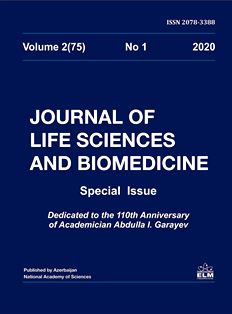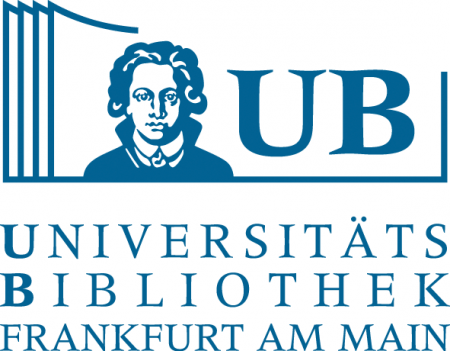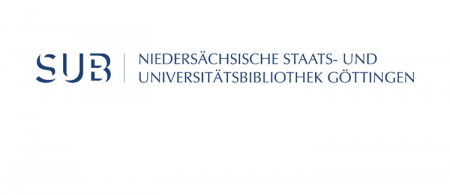
Soft tissues regional blood flow and microvasculature upon different perioperative treatment strategies following indirect revascularization in patients with critical lower limb ischemia, caused by occlusion of distal arteries
Research article: Soft tissues regional blood flow and microvasculature upon different perioperative treatment strategies following indirect revascularization in patients with critical lower limb ischemia, caused by occlusion of distal arteries
Authors: J.V. Kosayev1*, I.A. Hasanov2*
1 Scientific Center of Surgery named after Academician Mustafa Topchubashev, 196 Sharifzadeh Str., Baku AZ1122 Azerbaijan;
2 National Center of Oncology, 79B Zardabi Ave., Baku AZ1012, Azerbaijan;
*For correspondence: jvkosayev@mail.ru; ihasanov61@gmail.com;
Accepted for publication: 19 June 2020
Abstract:
This work was aimed at studying the effect of different perioperative treatment strategies following indirect revascularization on regional blood flow and microcirculatory network of soft tissues in patients with critical lower limb ischemia. The study was conducted in 210 patients (154 men, 56 women) with critical lower limb ischemia aged from 28 to 74 years, who were receiving hospital tre- atment during 2001-2019, with the ischemia duration of two-months-up-to-four-years. The cause of critical ischemia was the occlusion of the arteries of the femoral-popliteal-tibia and tibia-foot seg- ments of the atherosclerotic and thromboangiotic genesis. The regional blood flow was examined through non-invasive instrumental techniques (the determination of oxygen saturation of skin, rheovasography, Doppler ultrasonography, ultrasound duplex scanning). The state of the microvas- culature and neoangiogenesis was evaluated by complex morphological and immunohistochemical studies of tru-cut biopsy specimens of ischemic limb soft tissues in 80 patients (55 men, 25 women). Non-parametric tests were used to analyze digital data. It was found that in contrast to controls, the combined administration of intravenous laser blood irradiation and cytokine therapy with 'Roncoleukin' in the perioperative period of revascularizing osteotrepanation with intraosseous la- ser irradiation accelerates neoangiogenesis and increases the number of functionally active micro- vessels with open lumen in the soft tissues of ischemic limb. The statistically significant improve- ment in regional blood flow and skin oxygen saturation was observed after indirect revascularizati- on as well. The combination of intravenous laser blood irradiation and cytokine therapy in the pe- rioperative period of indirect revascularization by osteotrepanation with bone marrow laser irra- diation creates favorable conditions for increasing regional blood flow and promoting neoangioge- nesis to improve microvasculature in critically ischemic lower limb.
Keywords: Occlusion of arteries, critical ischemia, indirect revascularization, laser irradiation, cytokine therapy, regional hemodynamics, microvasculature
References:
Bockeria L.A., Temrezov M.B., Kovalenko V.I. et al. (2011) Actual problems of surgical treatment of patients with critical lower limb ischemia - ways of solving (state of the problem). Annals of Surgery, no. 1: 5-9.
Burov A.Yu., Artem'eva K.A., Azaryan A.S. et al. (2019) Differentiated approach in the treatment of patients with critical ischemia of the lower extremities with atherosclerotic lesions of the arteries of the femoral-tibial segment. Angiology and Vascular Surgery (Supplement), 25(2): 81-82.
Gasanov I.A., Kosaev J.V. (2019) Combined use of intravenous laser therapy, intraosseous laser irradiation and roncoleukin for indirect revascularization in patients with distal arterial disease with critical lower limb ischemia: Proceedings of a scientific and practical conference with international participation. Moscow: Laser medicine, 23(issue 3S):16
I. I. Zatevakhin, V. N. Shipovskii, V. N. Zolkin, and I. Yu. (2011) Long-term results of open endovascular operations in the correction of occlusive-stenotic lesions of the arteries of the femoral-popliteal segment. Angiology and Vascular Surgery, 17(#3): 59-64
Kazakov Yu.I., Zhuk D.V. (2019) Comparative results of open and endovascular interventions in patients with occlusion of the femoropopliteal arterial segment in the stage of critical ischemia of the lower extremities. Angiology and Vascular Surgery (Supplement), 25(2): 181-182.
Pokrovsky A.V., Kazakov Yu.I., Lukin I.V. (2018) Critical lower limb ischemia (Infrainguinal lesion): monograph. Tver: Ed. center of Tver. state un-ta, 225 p.
National guidelines for the diagnosis and treatment of diseases of the arteries of the lower extremities (2019) Angiology and Vascular Surgery (Appendix), 25(2): 110 p.
V. G. Khovalkin, A. S. Tarabrin, and N. Yu. et al. (2019) Long-term results of endovascular interventions in patients with popliteal artery occlusion suffering from critical lower limb ischemia. Angiology and Vascular Surgery (Supplement), 25(2): 468-469.
Zusmanovich F.N. (1999) Revascularizing osteotrepanation in the treatment of chronic critical ischemia of the lower extremities. Surgery, no. 4: 10-12.
Kosaev J.V. (2011) Intramedullary laser irradiation in complex surgical treatment of patients with critical lower limb ischemia. Central Asian Medical Journal, No. 4: 213-216.
Kosaev J.V. (2012a) Revascularizing osteotrepanation and laser irradiation in the complex surgical treatment of patients with critical lower limb ischemia// Bulletin of Surgery of Kazakhstan, 2012. - No. 1. - p. 46-49.
Kosaev J.V. (2012b) Indirect methods of revascularization and laser irradiation in the treatment of patients with obliterating diseases of the arteries of the lower extremities. Bulletin of Surgery of Kazakhstan, No. 2: 7-9
Krotovsky G.S., Zudin A.M. (2005) Management of patients with critical lower limb ischemia. M.: -160 p.
Sukhovatykh B.S., Orlova A.Yu. (2013) Treatment of critical ischemia of the lower extremities by methods of indirect revascularization (monograph). Kursk: Ed. KSMU, 208 p.
Junkerov V.I., Grigoriev S.G., Rezvantsev M.V. (2011) Mathematical and statistical processing of medical research data. St. Petersburg: VmedA, 318 p.
Aslyaev A.L., Kushnaryova E.A., Stepanenko R.N., Kushnaryov A.A. (2016) Indirect revas-cularization occlusion of lomer limb arteries. Bulletein of Problems of Biology and Medicine, 2(part 1(128)): 15-18.
Biancari F., Kantonen I., Albacr A. et al. (2007) Risk-scoring method for prediction of 30-day postoperative ourcomt after infrainguinal surgical revascularization for critical lower-limb ischemia: a Finnvasc registry study. World J. Surg., 31(1): 217-227.
Bosch J.L., Hunink M.G. (2007) Meta-analysis of the results of percutaneous transluminal angi-oplasty and stent placement for aortoiliac occlu-sive disease. Radiology, 204(1): 87-96
Clair D.G., Dayal R., Faries P.L. et al. (2005) Tibial angioplasty as an alternative strategy in patients with limb-threatening ischemia. Ann. Vasc. Surg., 19(1): 63-68.
Dey P. (2018). Basic and Advanced laboratory techniques in histopathology and cytology. Sin-gapore: Springer, 275 p.
Nowak-Sliwinska P., Alitalo K., Allen E., Anisi-mov A. et al. (2018) Consensus guidelines for the use and interpretation of angiogenesis as-says. Angiogenesis, 21(3): 425-532.























